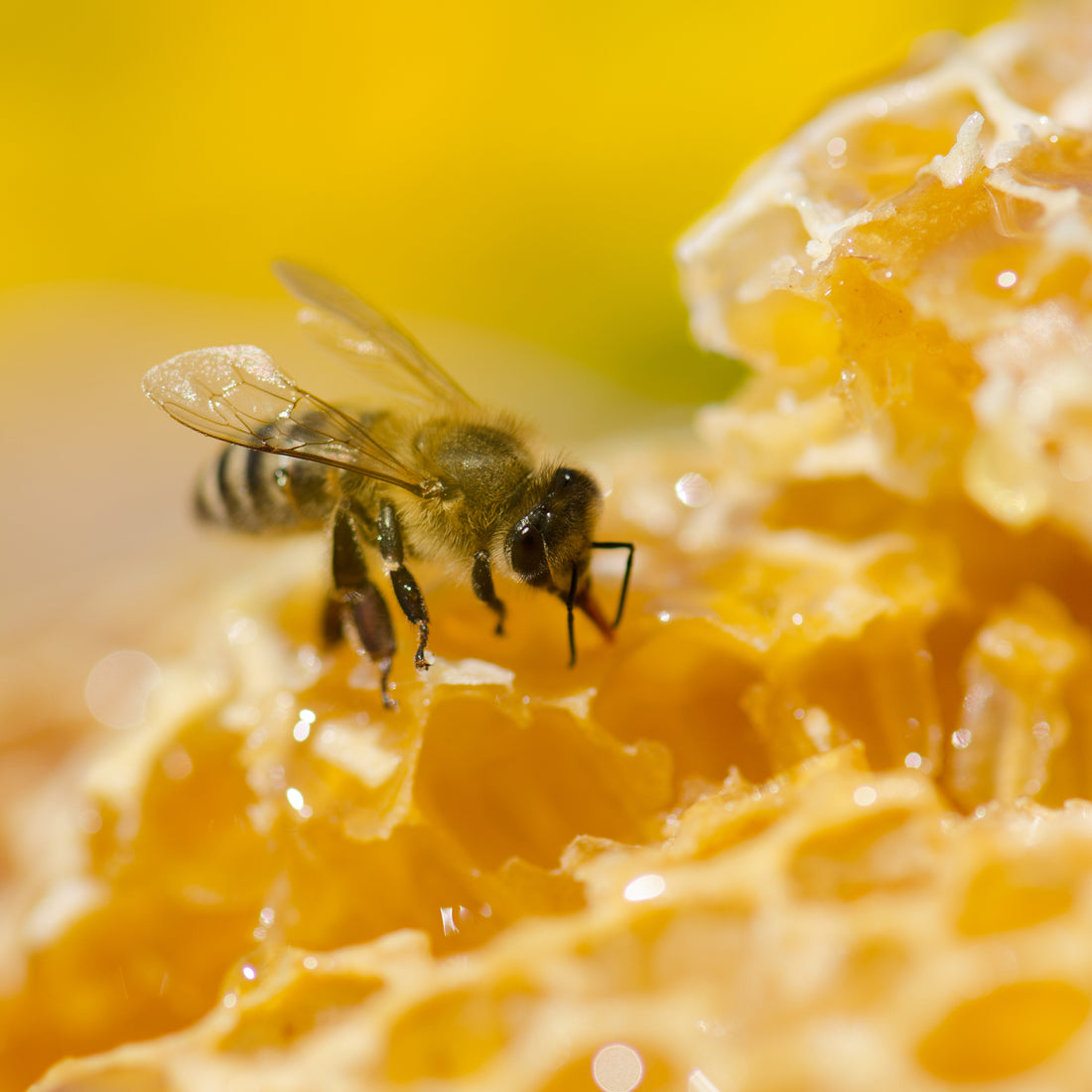The Sweet Wonders of Honey and Honey Bees: Nature’s Gift

Share
The Sweet Wonders of Honey and Honey Bees: An Educational Journey from Grandmother’s Kitchen
In Grandmother’s Kitchen, honey isn’t just a sweet treat—it's a symbol of nature’s generosity and the intricate work of honey bees. For centuries, honey has been treasured not only as a natural sweetener but also for its medicinal properties. This article takes you on a journey into the fascinating world of honey bees, their vital role in producing honey, the importance of bees in our ecosystem, and some traditional remedies that have stood the test of time.
Honey Lemon Remedy: A Classic for Cold and Flu
Before diving into the world of honey bees, let’s start with a simple yet powerful remedy cherished for generations.
Honey Lemon Tea for Cold and Flu
Honey and lemon create a potent natural remedy, soothing a sore throat, reducing cough, and boosting the immune system.
Ingredients:
1 cup hot water
1 tablespoon honey
1 tablespoon fresh lemon juice
A slice of fresh ginger (optional)
Instructions:
- Heat Water: Boil a cup of water and let it cool slightly.
- Mix Ingredients: Add honey and lemon juice to the hot water and stir well.
- Add Ginger: If desired, add a slice of fresh ginger for an extra kick.
- Sip Slowly: Drink this warm concoction to help alleviate cold and flu symptoms.
This time-honored remedy harnesses the antibacterial properties of honey and the vitamin C in lemon to support health during cold and flu season.
The Life of a Honey Bee
Honey bees are extraordinary creatures, dedicating their lives to producing small amounts of honey. A single worker bee will produce about 1/12th of a teaspoon of honey in its lifetime. Despite this modest contribution, the collective efforts of the hive sustain the entire colony and contribute to ecosystems around the world.
Key Facts About Honey Bees:
- Lifespan: Worker bees live for about six weeks during active seasons.
- Foraging Distance: They travel up to 5 miles from the hive, visiting 50-100 flowers on each trip.
- Communication: Honey bees use a "waggle dance" to show other bees the location of flowers.
The Importance of Honey Bees in the Ecosystem
Honey bees are crucial pollinators, responsible for much of the food we eat. They pollinate around 75% of the crops that feed us, including fruits, vegetables, and nuts. By helping maintain plant biodiversity, honey bees ensure the production of a wide range of food crops and support the natural environment.
The Honey-Making Process
The process of making honey is an intricate team effort that involves the entire hive. It all starts with worker bees collecting nectar from flowers.
- Foraging: Bees gather nectar using their long tongues, storing it in their "honey stomachs."
- Nectar to Honey: Back at the hive, the nectar is passed from bee to bee, gradually turning into honey through digestion and regurgitation.
- Storage: Honey is stored in hexagonal cells, and bees fan their wings to evaporate excess water, thickening the honey.
- Sealing: Once ready, bees cap the honey with wax to preserve it.
Traditional Honey Remedies from Grandmother’s Kitchen
Honey and Cinnamon for Immunity
Honey and cinnamon are a powerful duo known for boosting the immune system and fighting infections.
Ingredients:
1 tablespoon honey
1/2 teaspoon cinnamon powder
Instructions:
Mix the honey and cinnamon into a paste and consume daily for a natural immunity boost.
Honey for Wound Healing
Honey’s antibacterial properties make it effective for healing minor cuts and burns.
Instructions:
- Clean the wound with water.
- Apply a thin layer of honey.
- Cover with a bandage, changing it daily.
Honey and Apple Cider Vinegar for Digestion
This classic tonic supports digestion and can help alleviate acid reflux.
Ingredients:
1 tablespoon honey
1 tablespoon apple cider vinegar
1 cup warm water
Instructions:
Mix the ingredients in warm water and drink before meals.
The Decline of Honey Bees and How to Help
In recent years, honey bee populations have been declining due to habitat loss, pesticide use, and climate change. This decline is a major concern as it threatens our food supply and ecosystem balance. Here’s how you can help:
- Plant Bee-Friendly Flowers: Provide bees with nectar and pollen by growing a variety of flowers.
- Avoid Pesticides: Use natural pest control methods to protect bees.
- Support Local Beekeepers: Purchase honey and other bee products from sustainable, local beekeepers.
Fun Facts About Honey
- Long Shelf Life: Honey never spoils—pots of honey have been found in ancient tombs, still edible after 3,000 years.
- Flavors Vary: Honey’s flavor changes depending on the flowers the bees visit.
- Energy Booster: Honey is a natural carbohydrate, making it an excellent source of quick energy.
In Grandmother’s Kitchen, honey is cherished not just for its sweetness but for its remarkable benefits and the amazing honey bees behind it. From traditional remedies to understanding honey bees' critical role in our ecosystems, honey connects us to nature and promotes health. Every spoonful of honey is a reminder of the extraordinary efforts of honey bees, a gift from nature that supports both our wellbeing and the planet.


